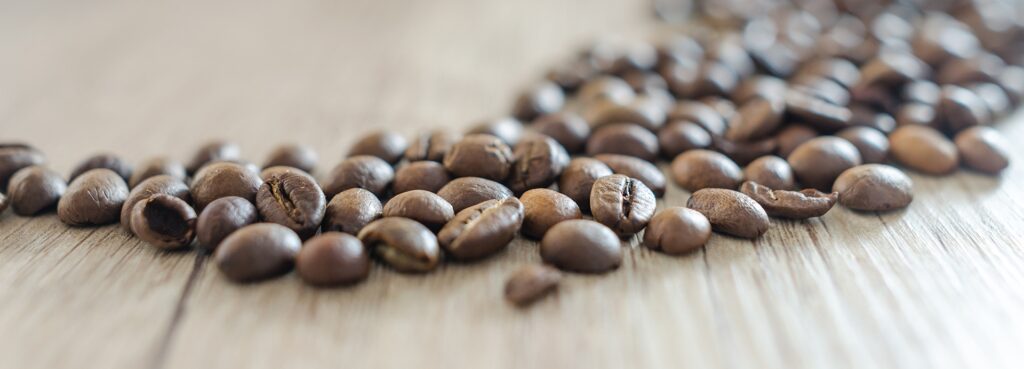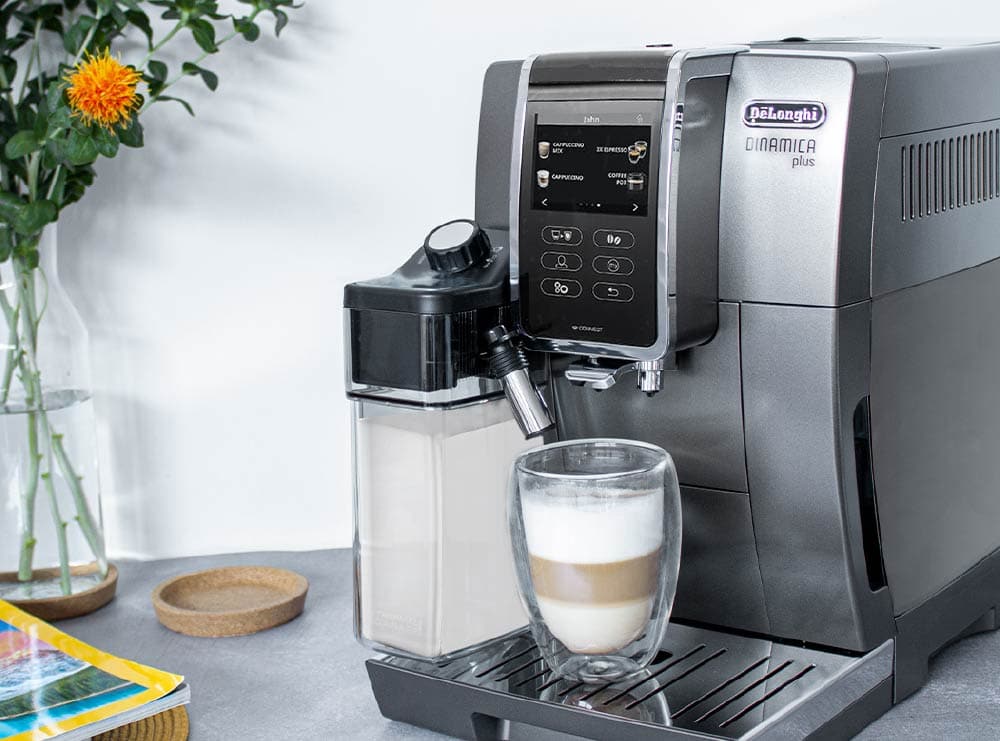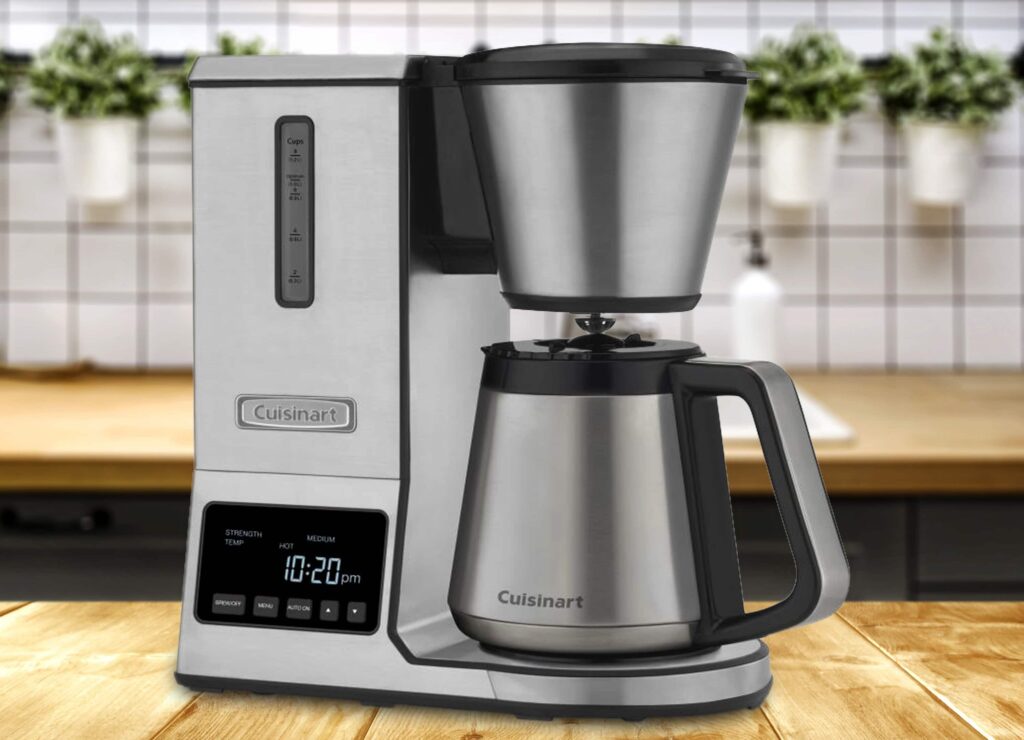Coffee is more than a drink, it is an experience of aromas and flavors, of textures and levels of intensity, and it is something that is achieved according to the preparation and the type of tool used for its brewing. Among the most popular manual coffee makers are the Chemex and the French press. But in a Chemex vs French press comparison or argument, the fans of the French press will tell you it’s their best type of coffee maker since it is responsible for extracting every detail that makes coffee special. However, thanks to the system of paper filters that are used for the extraction in Chemex coffee makers, the coffee’s own oils are retained in these and do not reach the cup. With this, we get a light drink, without sediment and with a unique flavor. However, automatic coffee machines are no less popular, so we have prepared an article for you about the best nespresso machines. So, a French Press or Chemex: which do you choose?

Many design products choose to have form over function. But in the case of Chemex, that’s not the case at all. This coffee maker is easy to use and above all, it manages to get the best out of coffee. The Chemex coffee maker is a pour-over brewer that is ideal for purists.
Nothing can compare to a Chemex coffee maker if you like classic beauties. According to most reviews, the sturdiest and most classic model must be the Pour-Over Glass Coffeemaker from Chemex®, which, thanks to its non-porous borosilicate glass construction, is the most reliable option out there.
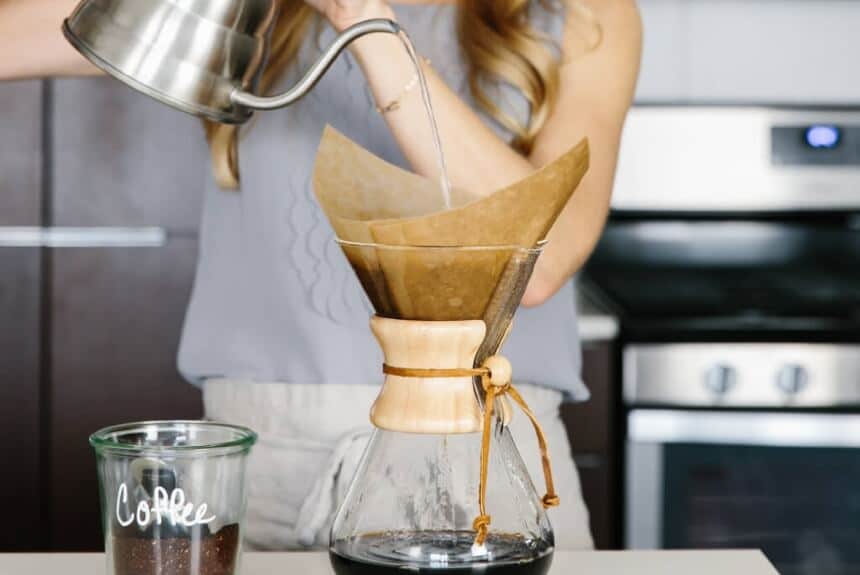
Thanks to the system of paper filters that are used for extracting with the Chemex, the coffee’s own oils are retained in these and do not reach the cup. With this, you get a light drink, without sediment and with a unique flavor.
Some Chemex coffee makers have reusable stainless-steel filters. These replace the classic paper filters. This is more ecological, but on the contrary, it can change the result of the coffee by not retaining the particles or oils as effectively.
As for the process of making coffee with the Chemex coffee machine, it is easy, but slower than with other systems.
The result of this method is very clean. The filter is the secret because it’s thick, it catches all the sediment that the previous methods do not. In some stores, you can find bamboo filters, which will give your coffee a completely different flavor.
The color of the liquid will be in amber or brownish yellow color; You will hardly have dark brown coffee due to the cleanliness left by the filter.
In this method, it is not recommended to add milk, because being so pure, your coffee could kill the flavor; the same applies to sugar.
The grind of this method should be finer than that of a French press but not as thin as sand, since if it is so fine that there could be no room for the water to seep, and therefore there is no extraction.
The ideal pouring time will be between 3 and 5 minutes.
To use it, the steps would be the following:
Tip: If you like your coffee to be hotter, the Chemex can be heated on a glass or gas burner, as well as on an electric burner. A separate adapter is sold for this.
There are several advantages to this type of manual coffee maker. Among the main advantages of Chemex coffee machines, we can highlight:
On the other side, there is the drawback of brewing time. It is somewhat slower than with other coffee machines since it has several steps and waiting times that must be respected for its correct extraction. You have to previously heat the water, pour it little by little and wait for the whole process to complete. Other downsides include:
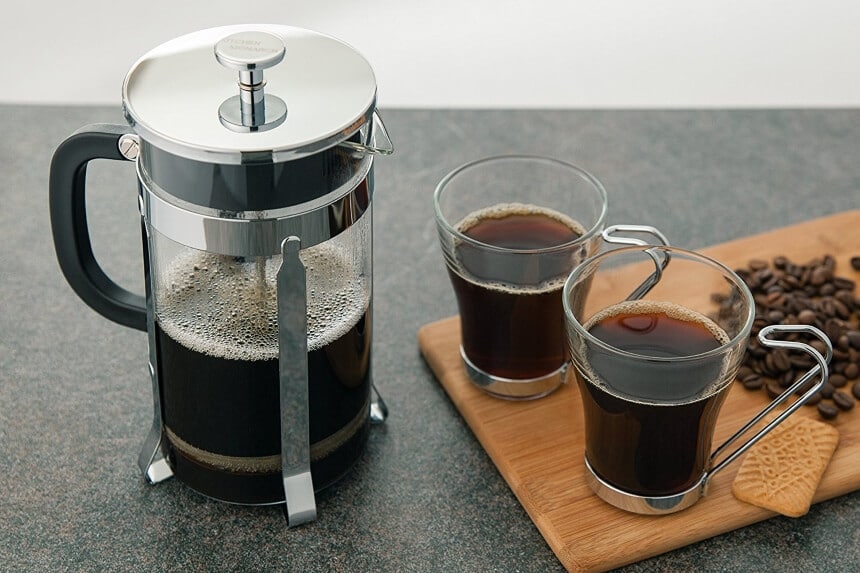
A French or plunger coffee machine, as it is otherwise called, can make coffee without electrical cables, just like the Chemex. It is used to make a drink with an intense flavor quickly and easily. They usually have a capacity ranging from three to eight cups.
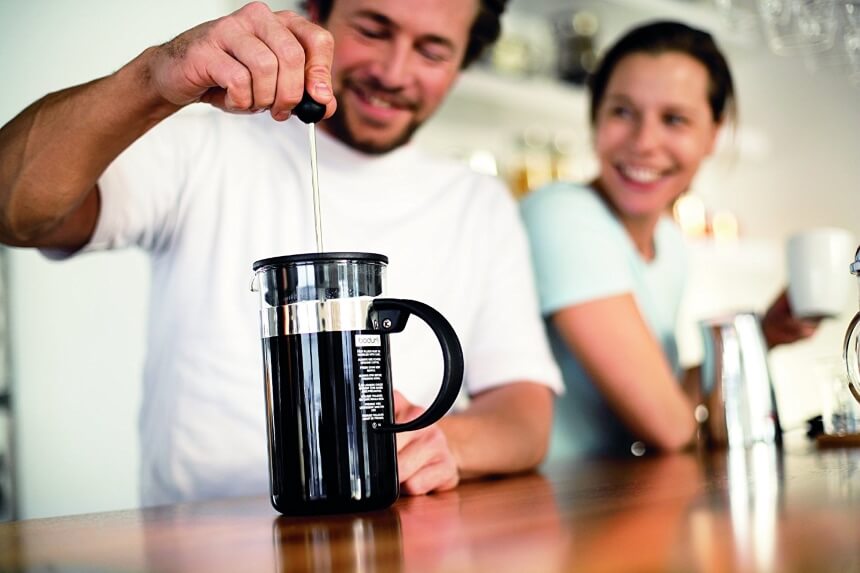
This means that coffee and water mix freely for several minutes. The water not only passes through the coffee in seconds, but the two elements mix freely.
This allows the coffee to reveal all its riches and its peculiarities. In this option, no filter is necessary, since the plunger fulfills the function of catching the ground coffee. Although the grid of the plunger is fine, in this method the smallest residues of the coffee will surely pass through it, so your coffee will be stronger in flavor due to its sediments.
Unlike the Chemex, one of the advantages of the French Press is that it does not use additional filters, so your expense will only be the press and coffee.
Also, the French press is ideal if you like to brew your coffee with milk or cream or perhaps sweeten it. If you like to have different tastes of coffee regularly and try new things, this is certainly the coffee maker for you!
With the press, you should handle the glass with the greatest care. If it breaks, you will hardly find a replacement, so you will probably have to buy a new one.
Always get the water to boil, but you have to let it rest for a few seconds so that it has the perfect temperature. Ideally, when it comes in contact with the coffee, it should be about 90 degrees. To do this, you should let it cool for about 45 seconds.
If the coffee is of quality, but the water is too rich in minerals or too few, the final flavor can be compromised. To have a good coffee with a French press, you should use bottled water with a low fixed residue or use filtered tap water.
You want your coffee to be strong and energetic, right? You must therefore make sure you have a good proportion of coffee and water. Usually, a teaspoon of coffee is used for each cup, but you can make multiple attempts to find the most pleasant proportion for you.
When brewing with a French press, the best thing would be to grind your coffee yourself, because the powder you find on the market is usually very fine. The ideal is that the grind is coarse to obtain an optimal result.
Among its main advantages is the preservation of the coffee flavor, as well as its natural oils. This gives the drink a touch of greater intensity. It extracts the greatest amount of coffee when brewing it, giving a body to the drink, and transforming it into an experience, more than a simple liquid.
Some of the main advantages of a French press is that:
Next in this section, we’ll have a Chemex vs French press coffee comparison; that is, a detailed comparison and then a tabled comparison:
Brewing coffee with the Chemex takes around 5 to 6 minutes while you can be done in 4 minutes with a French press. The latter is faster because you don’t need to set up the filter.
Winner: French press
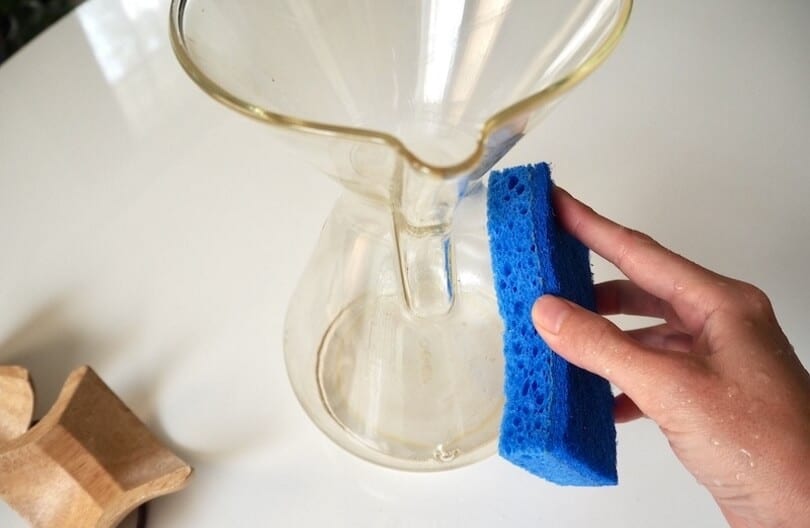
Winner: Chemex
With a Chemex, you’ll get the best brew with a light to medium roast Arabica bean from a single origin. With a French press, the best result is derivable from a medium to dark roast bean. The French press will bring good results with either Arabica beans of a single origin or a blend of Arabica and Robusta.
Winner: French press
The Chemex has a filtration system that filters out thicker residues leaving a clean and clear brew. However, this process rids the coffee of its rich taste. The French press doesn’t include the paper filter process and the natural oil of the coffee is retained. Hence, the French press makes the richest taste, especially when made from freshly ground beans.
Winner: French press

Winner: French press
On average, a 6-cup Chemex coffee maker measures 8.5 inches high and can weigh less than 2 pounds. Meanwhile, a French Press is less tall in height and measures under 8 inches. However, its weight is similar to the Chemex, which makes them similarly portable. But the French Press wins because it is not as fragile as glass-made Chemex. Portability sometimes means transportability, and glass here may be complicated to travel with without the utmost caution. Many French Press models have stainless steel construction which makes them more durable. The Mueller French Press Coffee Maker, the bestselling coffee press online, is made from 304 Stainless Steel that has double insulation.
Winner: French press
CHEMEX coffee brewers are often more expensive than the French Press. The pricing of a Chemex brewer begins at around $30 to $40, a bit too much for a manual coffee maker. Meanwhile, you can acquire a French Press for as low as $10.
Winner: French press
Below is how both compare in terms of criteria such as the brew method, ease of use, brewing time, among others:
| CHEMEX | FRENCH PRESS | |
| Brew method | Filtration or dripping | Steeping |
| Ease of use | Involved | Medium |
| Brewing time | 4 minutes | 5 minutes |
| Control over the brew | Yes | Yes |
| Resulting brew | Rich and clean | Full-bodied, with sediments |
| Materials | Glass | Stainless steel, glass, plastic |
| Sizes available | 3-cup, 6-cup, 8-cup | 8 oz., 16 oz., 23 oz., 36 oz. |
| Price range | $30 – $70 | $10 – $70 |
With a Chemex, You can have control over all the settings to get the coffee you want. You can manage the water temperature, flow rate, pre-infusion time, etc. The result is up to you. It is much easier to use than the French Press and just as easy to make coffee with this machine as it is with an electric coffee maker. However, it will still take you 5 to 6 minutes to prepare your coffee to your liking, unlike the 3 to 4 minutes needed with a French Press.
However, the French Press has a mechanism that consists of mixing coarse ground coffee with boiling water. It should be left for approximately 4 minutes and then the lid is placed with the plunger (elongated structure inside). Just after the minutes, it is pressed down, and you’ll be able to mix both elements with the natural oils.
Throughout this Chemex vs French Press comparison article, you’ve been able to see what both types of coffee makers are, and what they offer. Conclusively, the French Press looks the better in almost all comparison aspects; the only criterion where the Chemex seems better is in the ease of use/cleaning.


